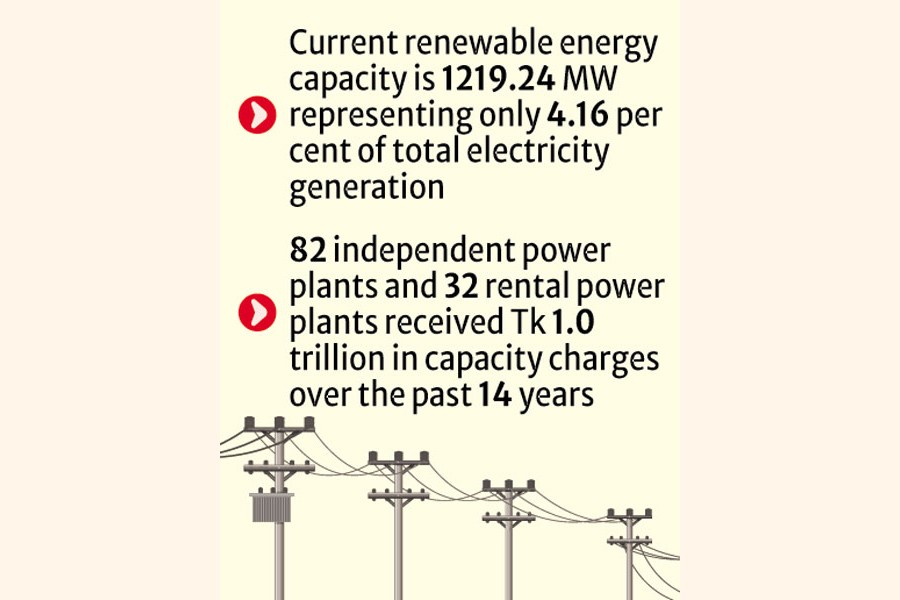
$45.2b required for transition to green energy: SANEM
FE REPORT | Sunday, 24 November 2024

An investment of up to US$ 45.2 billion is needed to transition to green and clean energy, according to the studies of the South Asian Network on Economic Modeling (SANEM).
The studies explore three investment scenarios based on least-cost approaches to achieve policy goals. It identifies funding requirements of $36.3 billion, $6.7 billion, and $45.2 billion under different policy scenarios. In the maximum-cost scenario, these figures escalate to $52.1 billion, $9.7 billion, and $64.8 billion.
The findings of the three studies were shared at a national level dialogue on 'Exploring a Sustainable Pathway for Bangladesh's Energy Transformation towards Green and Clean Energy' organised by SANEM in the city on Saturday.
Bangladesh's current renewable energy capacity is 1219.24 megawatt (MW) representing only 4.16 per cent of total electricity generation. The study underscores the need for significant investment to achieve future targets.
Senior Research Associate Mohammad Tuhin Ahmed presented the first two studies highlighting the impact of global fossil fuel energy price shocks on the country's macroeconomy and the influence of poor institutional quality and political economy in power and energy sector. Research Associate Ekramul Hasan shared the findings on integrating energy storage systems and explores various financing mechanisms to achieve renewable energy targets.
SANEM Executive Director Selim Raihan moderated the dialogue where representatives from various energy sectors, including Bangladesh Energy Regulatory Commission, Power Development Board, Sustainable Renewable Energy Development Authority, Ispahani Group, New Vision Solution and Earth, were present.
The studies revealed that the price shock in coal and LNG lead to increases in consumer price index (CPI), inflation and exchange rate while they predicted that energy price fluctuations may create macroeconomic instability in the long term, making it difficult to achieve overarching development goals including 8th Five Year Plan by 2025, Second Perspective Plan 2021-2041, SDGs by 2030, middle-income country by 2031, and upper middle-income country by 2041.
The study findings show that 82 independent power plants and 32 rental power plants received a staggering Tk 1.0 trillion in capacity charges over the past 14 years.
Citing 2008 financial crisis, 2020 COVID-19 outbreak, and the Russia-Ukraine War in 2022, it says energy price fluctuations were the greater source of variation in the macroeconomic variables during the crisis period.
The studies recommend transition towards renewable and clean energy sources reducing dependency on fossil fuel energy. But poor coordination, lack of institutional capacity as well as domination by one institution have created capacity constrains with a unified strategic vision to achieve the goals.
SANEM studies recommended among others diversification of energy sources, effective monetary policy adjustment, dynamic price adjustment mechanism, revising energy planning, strategic energy reserves, enhancing energy infrastructure, adoption of efficient technology, and attracting FDI in renewable energy projects.
smunima@yahoo.com